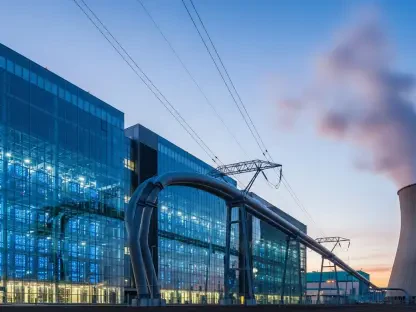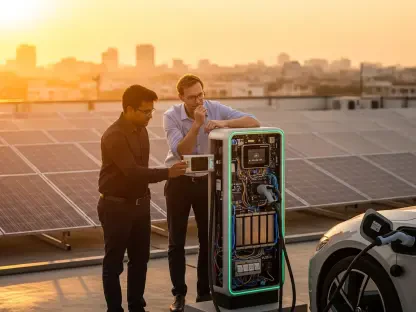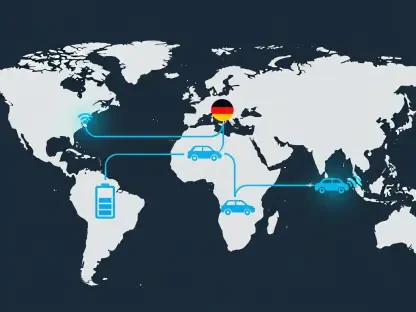In a world hungry for clean, sustainable energy solutions, a groundbreaking initiative at Los Alamos National Laboratory (LANL) in the United States is capturing attention with its bold approach to nuclear fusion. Known as the Plasma Liner Experiment (PLX), this project is charting a new course by abandoning the traditional reliance on massive lasers or superconducting magnets to achieve the conditions necessary for fusion—the same process that fuels the sun. Instead, PLX employs high-speed plasma jets to generate the extreme heat and pressure needed to fuse atomic nuclei, releasing tremendous amounts of energy without carbon emissions. This innovative method promises to simplify the complex and costly infrastructure typically associated with fusion research. As global energy demands continue to rise alongside environmental concerns, PLX stands out as a potential game-changer, offering a glimpse into a future where limitless, clean power could become a reality. The implications of this technology extend beyond energy, touching on immediate industrial applications and long-term scientific aspirations.
Revolutionizing Fusion Technology
The core innovation of the PLX project lies in its unique mechanism for achieving nuclear fusion, setting it apart from conventional approaches. At LANL, scientists have developed a system utilizing 36 plasma guns arranged in a spherical configuration. These guns simultaneously fire jets of high-speed plasma toward a central point, creating a collapsing shell or “liner” that compresses a magnetized target. This compression produces the intense conditions—millions of degrees of temperature and immense pressure—required to initiate fusion reactions. By eliminating the need for sprawling laser systems or intricate superconducting magnets, PLX offers a more compact and potentially less expensive alternative. This design not only challenges the status quo of fusion research but also opens doors to broader participation in a field historically limited by high costs and technical barriers. The streamlined approach could redefine how future experiments are conducted, making significant strides toward practical energy solutions.
Another critical aspect of this technological shift is the broader accessibility it may enable within the scientific community. Traditional fusion methods often demand vast resources and expansive facilities, restricting involvement to a handful of well-funded institutions or nations. The PLX system, with its relatively simpler setup, could lower these entry barriers, allowing smaller research entities or even private companies to contribute to fusion advancements. This democratization of access is vital for accelerating innovation, as diverse perspectives and expertise can drive creative solutions to longstanding challenges. Furthermore, the reduced complexity might shorten development timelines, bringing the dream of fusion power closer to realization. As energy needs grow globally, such an inclusive model could foster international collaboration, ensuring that the benefits of clean, abundant power are shared widely rather than confined to a select few. The potential ripple effects of this shift are profound, promising a more equitable pursuit of a transformative energy source.
Bridging Immediate and Future Applications
One of the standout features of the PLX technology is its dual-purpose functionality, addressing both immediate practical needs and ambitious long-term goals. In the short term, over the next one to three years, the system can replicate the extreme environmental conditions encountered by hypersonic vehicles or spacecraft during atmospheric re-entry. This capability positions PLX as a unique testing platform for critical components like heat shields and advanced materials, directly benefiting the aerospace and defense sectors. Such simulations are invaluable for ensuring the durability and safety of equipment under punishing conditions, filling a niche that few other facilities can address. By offering this service, PLX not only contributes to current technological advancements but also builds credibility and utility while the path to energy production is refined. This practical application underscores the project’s versatility, making it a strategic asset even before fusion power becomes viable.
Looking further ahead, the vision for PLX extends to transforming it into a cornerstone of grid-scale fusion energy within the next decade. The system’s modular and scalable design is a key strength, enabling the construction of smaller, more efficient power plants capable of delivering vast amounts of clean electricity. Unlike fossil fuel-based systems, fusion produces no greenhouse gases, aligning perfectly with global efforts to combat climate change. This adaptability means that power facilities could be tailored to meet varying regional demands, from urban centers to remote areas, without the environmental toll of current energy sources. If successful, this long-term goal could revolutionize the energy landscape, providing a sustainable solution to meet humanity’s growing needs while mitigating ecological damage. The promise of carbon-free power on such a scale drives the urgency behind PLX, positioning it as a critical piece of the puzzle in achieving a greener, more secure energy future.
Fostering Collaboration and Expanding Horizons
To propel PLX from experimental concept to real-world impact, LANL is actively seeking partnerships with the private sector, emphasizing the collaborative nature of modern scientific progress. Proposals for collaboration are due by October 4, 2025, with a partner selection slated for November 15, 2025, marking a pivotal step in accelerating development. Engaging commercial entities brings not only additional resources but also specialized expertise in scaling technologies for practical deployment. This synergy between public research and private innovation is essential for navigating the complex challenges of fusion, from refining technical designs to ensuring economic viability. By forging such alliances, LANL aims to bridge the gap between laboratory breakthroughs and market-ready solutions, ensuring that PLX’s potential is fully realized. This model of cooperation reflects a broader trend in high-stakes research, where shared efforts amplify outcomes far beyond what isolated endeavors could achieve.
Beyond PLX, LANL’s contributions to fusion science paint a picture of a laboratory deeply committed to tackling multiple facets of this complex field. Recent achievements include the development of the Thinned Hohlraum Optimization for Radflow (THOR) system, which successfully created a self-sustaining “burning plasma,” a critical milestone in fusion energy yield. Additionally, a proposed “tungsten shotgun” mechanism aims to enhance reactor stability by addressing issues like runaway electrons, showcasing forward-thinking solutions to technical hurdles. These parallel efforts highlight a comprehensive strategy at LANL, where diverse projects complement each other to push the boundaries of what’s possible. As a leader in fusion research, the laboratory’s multifaceted approach not only strengthens the foundation for PLX but also reinforces confidence in the broader quest for fusion power. This holistic dedication ensures that every angle of the challenge is explored, maximizing the chances of eventual success.
Paving the Way for a Sustainable Tomorrow
Reflecting on the journey of the Plasma Liner Experiment at Los Alamos National Laboratory, it becomes evident that this project marks a significant departure from traditional fusion methodologies. Its reliance on plasma jets to achieve the necessary conditions for nuclear fusion sidesteps the cumbersome infrastructure of lasers and magnets, carving out a path that is both innovative and pragmatic. Over time, PLX has demonstrated its worth not just as a potential energy solution but as a vital tool for testing extreme conditions in aerospace and defense applications. The strategic partnerships forged with private entities have played a crucial role in amplifying its development, while LANL’s wider fusion initiatives add depth to the endeavor. Looking ahead, the focus should shift to sustaining this momentum through continued collaboration and investment, ensuring that the modular, scalable design of PLX is fully leveraged to build efficient power systems. Addressing remaining technical challenges with rigorous testing and international cooperation will be key to transforming this pioneering experiment into a cornerstone of global clean energy infrastructure.









